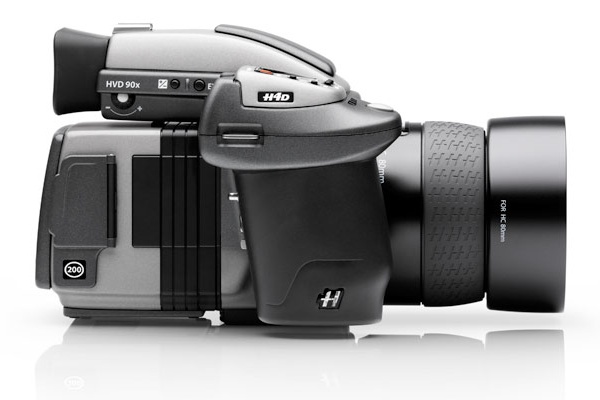Hasselblad has released the H4D-200MS, a 200 megapixel beast that will set you back a whopping €32,000 ($45,000) plus tax. First announced at Photokina in September 2010, the camera builds on the H4D-50MS platform to create 200 megapixel files.
In fact, H4D-50MS owners have the option of upgrading their camera for €7,000 ($10,000) plus tax by sending it to the factory in Copenhagen, Denmark. While the camera is being converted, the service team will make sure that the firmware and hardware is properly upgraded and updated.

Hasselblad has been improving its multi-shot technology since 2000. In 2008, the company announced the first integrated multi-shot camera, the H3DII-39MS, which was quickly followed by the H4D-50MS. As a further development of the H4D-50MS technology, the H4D-200MS utilizes Hasselblad's patented piezo frame module, which now captures six shots before combining them into a 200 megapixel file.
The H4D-200MS includes all the functionality of the H4D-50 and H4D-50MS (True Focus, Ultra Focus, digital lens correction, and so on) plus a range of top of the line features that make the H4D such an outstanding camera system. It also provides three capture modes:
- Normal single-shot capture for 50MP resolution images of live subjects
- Four-shot, 50MP Multi-Shot capture for high detail images of still subjects
- Six-shot, 200MP Multi-Shot capture for the ultimate in still subject capture
Designed for studio photographers whose work requires the ultimate in resolution, extremely fine details, and exact color information, the H4D-200MS is ideal for capturing images of stationary items such as cars, jewelry, artwork, and other high end products where there is no room for compromise in image quality. Hasselblad insists that the H4D-200MS is not just a single-use specialty camera.
"There are times when you want to get extremely close," Hasselblad explains. "Times when you want to get extremely large. Times when you want the absolute highest detail possible. Times when even the largest standard resolutions do not suffice. And that's where the Hasselblad H4D-200MS comes in."
https://www.techspot.com/news/43966-hasselblads-200mp-camera-will-set-you-back-32000-plus-tax.html